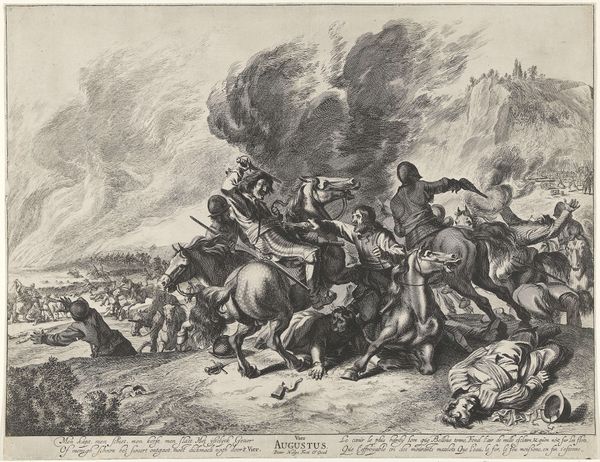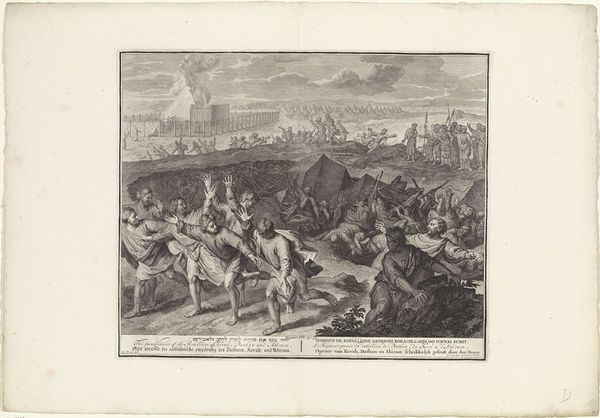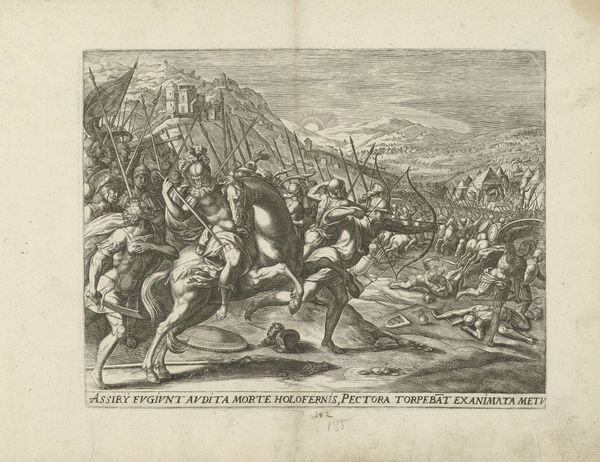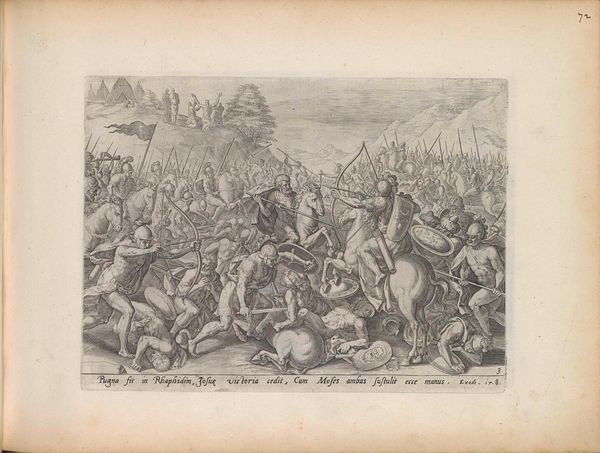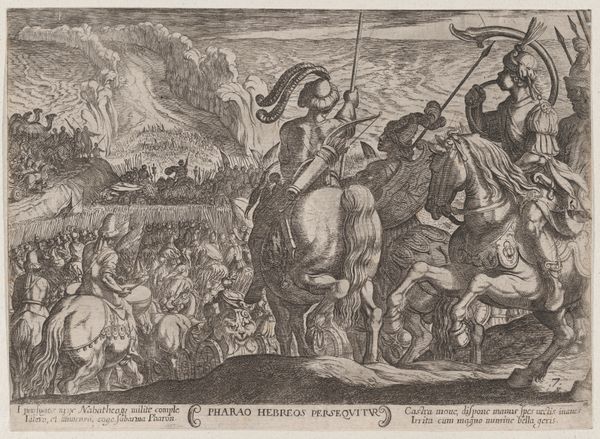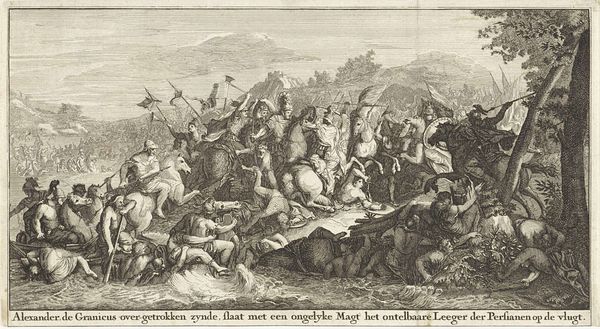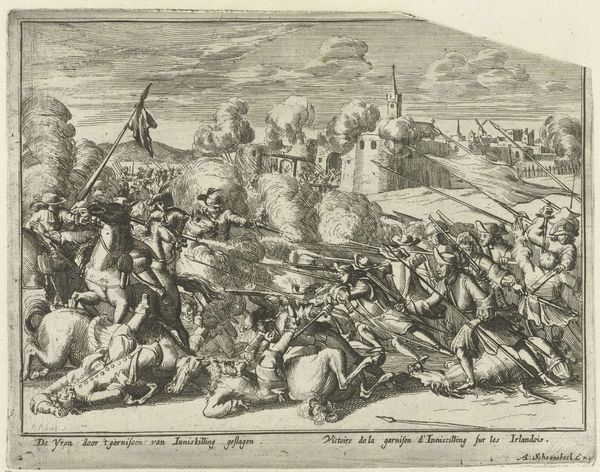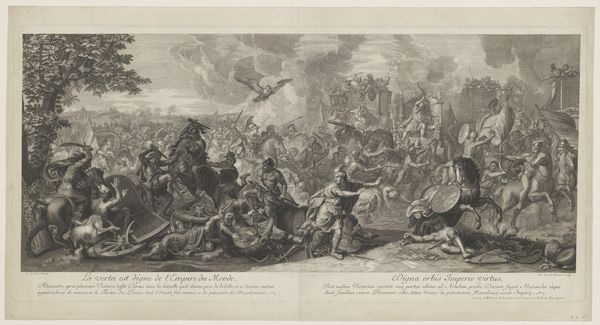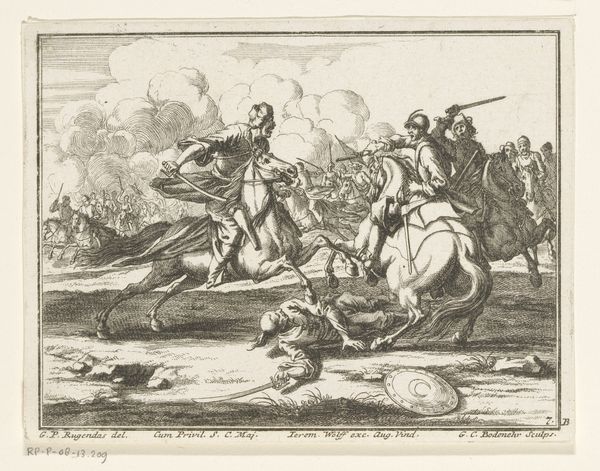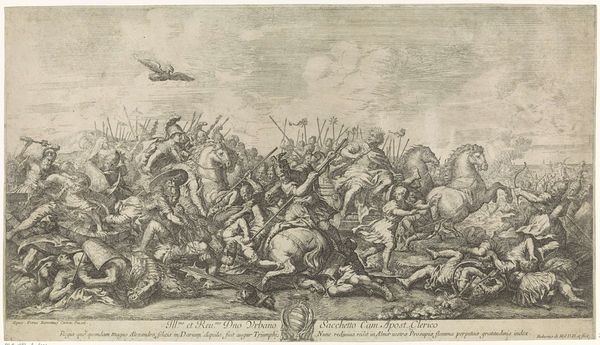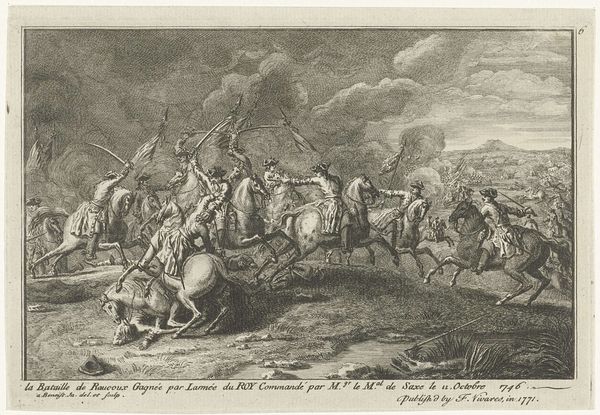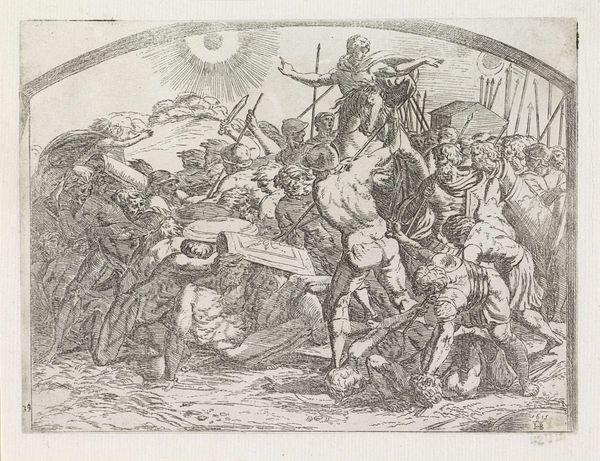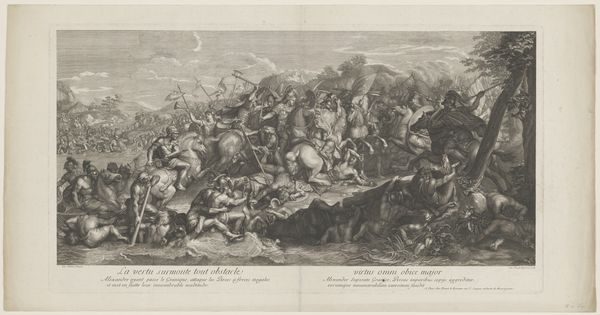
print, engraving
#
narrative-art
# print
#
pen sketch
#
pencil sketch
#
old engraving style
#
11_renaissance
#
pen-ink sketch
#
pen work
#
history-painting
#
italian-renaissance
#
engraving
Dimensions: height 137 mm, width 180 mm
Copyright: Rijks Museum: Open Domain
Giovanni Battista Fontana made this print depicting Acron's army attacking Romulus using an engraving technique sometime between 1524 and 1587. The visual language of printmaking is quite distinctive, defined by the stark contrast between the ink and the support, usually paper. Consider how Fontana would have achieved this level of detail. First, he would have carefully incised lines into a metal plate, a labor-intensive process requiring considerable skill. Ink would then be applied to the plate, pushed into the grooves, and the surface wiped clean. Finally, the image would be transferred to paper under high pressure, resulting in the print we see today. Engraving was crucial for disseminating images, making art and information accessible to a wider audience. Prints like this one played a vital role in shaping cultural narratives and collective memory, but it is equally the result of Fontana's expert hand. Appreciating the level of skill helps us to see beyond the image and to understand the human effort embedded in its creation.
Comments
No comments
Be the first to comment and join the conversation on the ultimate creative platform.

